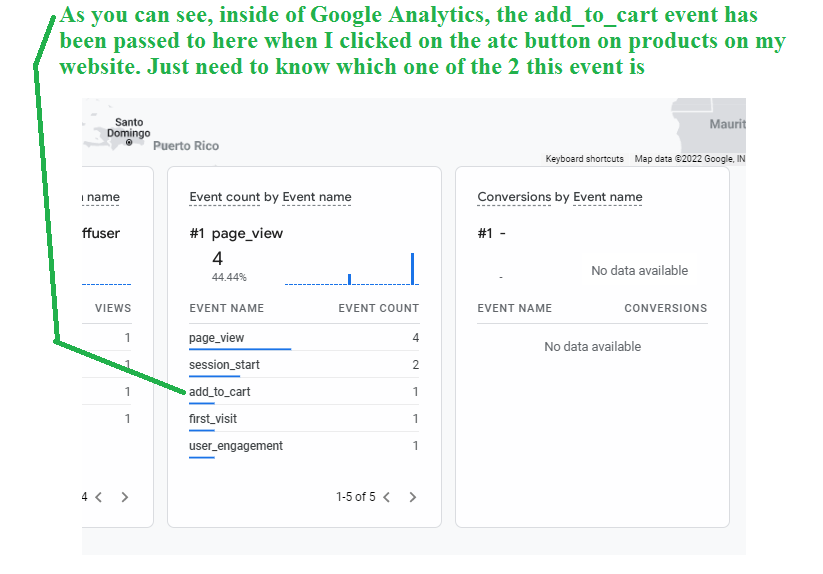Step-by-Step Tutorial: Remarketing In Google Analytics
Step-by-Step Tutorial: Remarketing In Google Analytics
Blog Article
Efficient Strategies for Remarketing in Google Analytics
In the realm of digital advertising, the realm of remarketing in Google Analytics stands as a pivotal tool for businesses intending to improve their on the internet visibility and conversion prices. Through critical target market segmentation, tailored remarketing lists, and interesting advertisement creatives, businesses can craft personalized campaigns that reverberate with their target audience. However, real success hinges on the ability to constantly refine and maximize these approaches based on performance metrics and information insights. By checking out the subtleties of dynamic remarketing and leveraging advanced monitoring tools, businesses can unlock the full possibility of their remarketing efforts, bring about raised brand name presence and client involvement.
Target Market Segmentation
Using audience segmentation is a crucial approach in maximizing the performance of remarketing campaigns within Google Analytics. By dividing your target market into distinct teams based upon their habits, demographics, or interests, you can tailor your advertising messages to be more appropriate and appealing. This strategy permits you to provide customized ads to specific sectors, enhancing the chance of conversion.

In addition, target market segmentation aids you recognize the differing requirements and choices of various consumer groups, permitting you to craft even more engaging ad creatives and offers. This targeted method not just enhances the efficiency of your remarketing initiatives but likewise improves general campaign performance.
Establishing Remarketing Listings
To effectively execute remarketing methods in Google Analytics, the initial step entails creating targeted remarketing lists based upon certain audience interactions. Establishing remarketing checklists allows marketers to segment their site visitors right into different categories based upon their habits, such as web pages checked out, items browsed for, or actions handled the website. By specifying these sectors, online marketers can after that produce relevant and customized ads that target these particular groups, enhancing the possibility of conversion.
Remarketing checklists can be established up making use of different criteria such as page gos to, duration of browse through, details objective completions, or also specific occasions activated on the internet site. This level of personalization enables marketing professionals to customize their promotions to match the interests and preferences of each fractional target market, bring about higher engagement and conversion rates.
Furthermore, remarketing checklists can additionally be developed based on data imported from other resources like CRM systems, enabling a lot more precise targeting. By establishing these targeted remarketing lists, marketers can properly connect to potential consumers that have actually currently shown rate of interest in their product and services, making the most of the impact of their remarketing campaigns.
Developing Engaging Advertisement Creatives
After segmenting internet site site visitors into targeted remarketing listings based upon certain audience interactions, the following vital step is to craft engaging ad creatives that resonate with each segmented group's preferences and interests. The efficiency of remarketing projects heavily counts on the capacity of these ad creatives to catch the interest of the target market and drive them to take the desired activity.
To produce engaging ad creatives, it is vital to recognize the unique qualities of each segmented team (What Is “Remarketing” In Google Analytics?). Customizing the messaging, visuals, and supplies to straighten with the interests and choices of the target market can significantly boost the possibilities of conversion. Utilizing dynamic advertisements that instantly change web site here content based upon the user's habits can likewise improve the customization of the advertisement experience

Surveillance Performance and Optimization
Effective tracking of project efficiency and consistent optimization are essential elements of successful remarketing approaches in Google Analytics. To guarantee the efficiency of remarketing campaigns, online marketers must frequently track essential performance metrics such as click-through rates, conversion prices, and return on ad spend. By keeping track of these metrics, marketers can obtain important understandings right into the efficiency of their campaigns and identify locations for improvement.
In Google Analytics, marketing experts can take advantage of tools like conversion monitoring and audience segmentation to evaluate the performance of their remarketing projects. Conversion tracking enables marketing experts to track details actions that customers take after clicking a remarketing advertisement, providing important data on the performance of the campaign in driving preferred end results. Audience segmentation, on the various other hand, allows online marketers to divide their target market right into various sections based upon numerous standards such as demographics, actions, and rate of interests, allowing for more targeted and personalized remarketing efforts.
Continuous optimization is necessary for maximizing the influence of remarketing campaigns. Online marketers ought to utilize A/B screening to experiment with various advertisement creatives, messaging, and targeting methods to determine one of look at this web-site the most efficient techniques. By consistently evaluating project performance information and making data-driven optimizations, marketing experts can make sure that their remarketing projects are accomplishing the wanted results and driving conversions effectively.
Leveraging Dynamic Remarketing
Utilizing vibrant remarketing can substantially improve the importance and influence of targeted ads in Google Analytics. This sophisticated technique enables advertisers to show personalized advertisements to users who have previously visited their site or used their mobile app. By dynamically showing services or products that the customers have shown passion in, dynamic remarketing aids to keep the brand fresh in their minds and urges them to go back to finish an acquisition.
Moreover, dynamic remarketing projects can be automated and optimized in real-time based upon efficiency data, making certain that the advertisements continue to be relevant and efficient. By leveraging dynamic remarketing in Google Analytics, marketers can develop more impactful and targeted advertising and marketing projects that resonate with their audience and drive outcomes.
Conclusion
To conclude, efficient remarketing strategies in Google Analytics involve audience division, targeted remarketing lists, engaging ad creatives, performance tracking, and dynamic remarketing. By focusing on customized advertisements, information analysis, and constant optimization, organizations can enhance conversion rates and drive engagement efficiently. Leveraging devices like conversion tracking makes certain that ads remain personalized and pertinent, resulting in total success in remarketing efforts.
With calculated audience segmentation, customized remarketing checklists, and appealing advertisement creatives, organizations can craft customized campaigns that reverberate with their target audience. Utilizing dynamic advertisements that instantly adjust web content based on the user's habits can also enhance the customization of the ad experience.
Conversion tracking allows marketers to track certain activities that individuals take after clicking on a remarketing advertisement, providing useful data on the efficiency of the project in driving preferred outcomes.Using dynamic remarketing can substantially boost the significance and impact of targeted ads in Google Analytics - What Is “Remarketing” In Google Analytics?.In verdict, effective remarketing approaches in Google Analytics involve audience division, targeted remarketing listings, engaging ad creatives, efficiency monitoring, and vibrant remarketing
Report this page